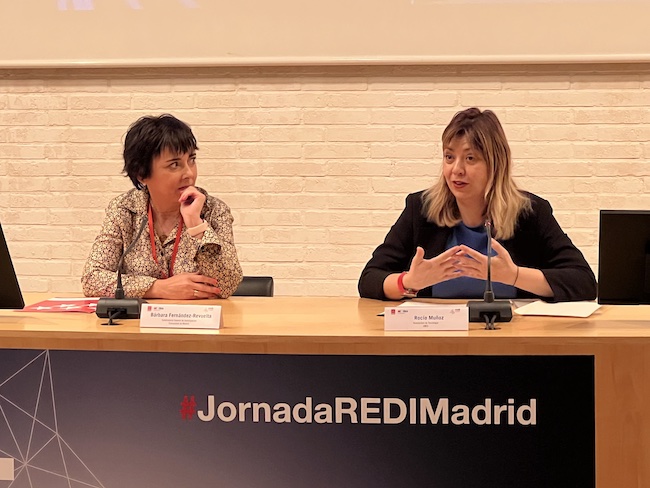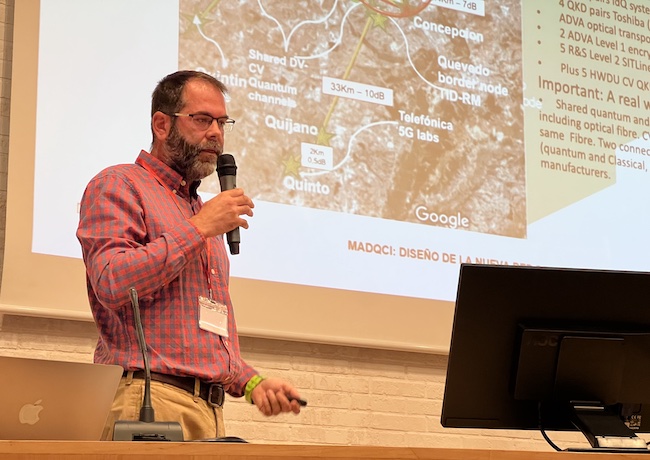
The XVIII edition of the REDIMadrid Conference took place last Tuesday, October 24, at the UNED Las Rozas campus between 9:30 am and 3:30 pm, and on Wednesday, October 25, at the IMDEA Software Institute’s facilities.
More than 90 people attended in person and 25 connected virtually to the first day.

IMDEA Software research professor and director of REDIMadrid, César Sánchez, welcomed the attendees and introduced the personalities who participated in the opening. First of all, Bárbara Fernández-Revuelta, Deputy Director General for Research of the Madrid Regional Government, highlighted the importance of the communications network for Universities and the new quantum networks for the security of communications, in which the Madrid Government is strongly committed with the MadQCI network.
Manuel Carro, Director of IMDEA Software, who joined telematically, continued the opening by thanking the UNED for its collaboration in the organization of the REDIMadrid Conference and also emphasized how important it is for IMDEA Software to manage REDIMadrid.
Finally, Rocío Muñoz, as UNED’s Vice-Rector for Technology, closed the opening session of the REDIMadrid Conference by thanking the network for its confidence in hosting this event and described the latest advances that UNED is working on in all its centers.

After the opening, the technical talks began with the intervention of César Sánchez and his presentation: “The state of REDIMadrid: present and future”. In it, he spoke about the state of REDIMadrid and the dark fibers that are being deployed to connect with greater speed, redundancy, new centers and the quantum network.

Next, David Rincón, coordinator of REDIMadrid, explained how the network has been involved in the European project OPENQKD, the largest quantum network in Europe, as well as in the new one being designed and deployed in the Madrid Regional Government, MadQCI.
After the presentations of the REDIMadrid team, the presentations of the Universities began, starting with the Universidad Autónoma de Madrid, given by Víctor Barahona, in which he explained the danger of misconfiguration in WiFi clients and the edurogue project that arose to detect them, he also prepared a demo to show it live to the attendees.
After a short break, César Carrasco, from the Escuela Técnica Superior de Ingeniería Informática de la UNED, gave a presentation describing perimeter security and the virtualization system they use. He also mentioned some of the research projects in which they are involved.
Rafael Calzada, from Universidad Carlos III de Madrid, was the next speaker. He explained the reasons for the migration of SIEM from Elasticsearch on physical nodes to Opensearch on containers managed with Docker swarm, improving efficiency and maintenance.
The conference continued with the intervention of Valentín Felip, head of the Technological Infrastructure Service of the Rey Juan Carlos University (URJC), who reviewed the evolution of the URJC Datacenters and how they have designed the last one, giving a great qualitative leap.
Finally, Pablo Collado, from the High Energy Department of the Universidad Autónoma de Madrid, described dvnet, the system they have developed to emulate the configuration of complete networks using Linux, network namespaces and docker containers.
The second REDIMadrid Day brought together the network partners for a private technical meeting.